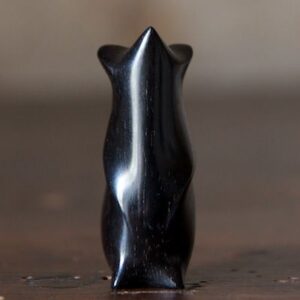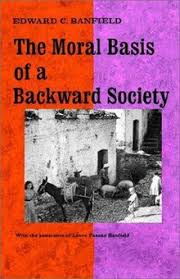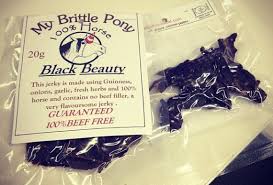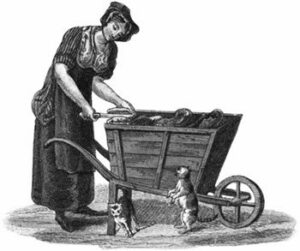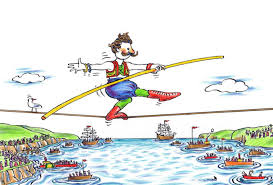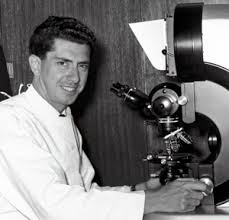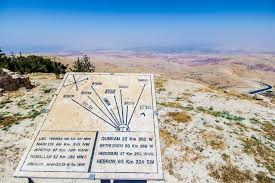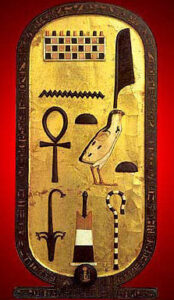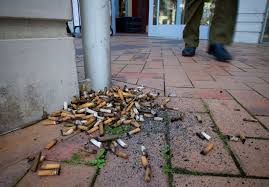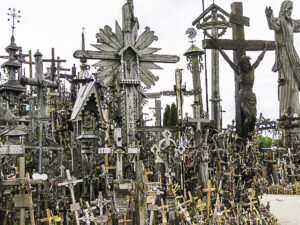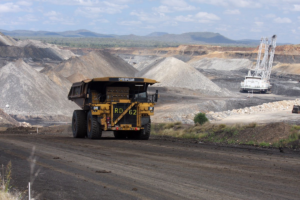“The problem with the drought is that it is predominantly affecting National Party electorates and as the Prime Minister charges round these electorates all he succeeds in doing is emphasising the impotency of government, while making the National Party look like drongos. Then enter off right, the Belgian fixative who does a deal with Hansen who knows when to throw a tantrum. Obviously her colleague in Tasmania has viewed this Flemish reflex, which has been adapted from Pavlov’s observation on canine behaviour. Frankly, I am sick of Keating’s unrepresentative swill being given a disproportionate voice while I struggle to pay my mortgage and make ends meet, all because of the manipulation by a Flem.”
Unfair; of course. But that is one example of how Australia is perceived as being governed. Maximising the influence of a few to the detriment of the majority. Just the frustration of being a young urban graduate, and collectively primed to burst forth, when the articulate leader of reform – perhaps a numerate “Whitlam” would help – emerges in the next three years, a person who puts the interests of the country first. Or do we reach a Chilean tipping point where the rules become radically different.
Some weeks ago, I recounted briefly that I had just come back from Chile where I made a point of visiting the Museum of Memories and Human Rights. At the time I said that the museum was “the brainchild of President Michelle Bachelet, to ensure that one memory sticks in the mind of the Chilean people. On a wall on the first floor are myriad photographs of Chileans murdered by the Pinochet regime – 130,000, probably more.”
Recently, she has visited Australia in her role as the UN Commissioner on Human Rights to deliver the Whitlam Lecture, which was booked out by the time I got round to it. But from snippets, I got the gist.
I had also seen an enticing advertisement for a house nestled in a valley between Santiago and Valparaiso – separate terraced complex houses a sauna, Jacuzzi and hot tub, and two bathrooms. The property also includes a one-bedroom guesthouse, a covered parking area for four cars and organic orchards with 750 avocado trees and other fruit trees with “income-producing potential”; on 17 acres handy to both Santiago and Valparaiso. The price? About AUD2m. All this under the headline: “Following a tax hike and a steep drop in sales, prices are rebounding thanks to a stable economy and new infrastructure projects.”
Yes, when we had been in Santiago in late August, it had seemed very quiet; well run city, taxi driver even praised the cops as the only honest police force in South America. However, that contrasted with a comment in The Economist about the current President, Sebastián Piñera, which concerned the social conflicts with students that had bedevilled his first term. In order to reinforce the point, The Economist alleged police had tried to cover up their murder of a member of the Mapuche, an indigenous people.
The Economist added, “That followed a string of scandals – ranging from planting evidence to corruption – in the Carabineros, the once-revered police force. The army is no better. Some officers have been found to have stolen public money; others have sold arms to drug-traffickers.”
Somewhat different perspective from that of our driver as we drove through quiet suburban streets to the Museum …
Sure, when we later went on the road to Valparaiso, the slums stretched along it for miles inducing a feeling of unease.
On the way, stopping for a wine tasting in the Casablanca Valley, it was just what you would expect from a wine tasting vineyard in Australia – impeccable surroundings both inside and out, a fire to warm this predominantly young stylish crowd from the winter cold. I was reassured there that Chile was an exemplar of middle class respectability.
Then off to Valparaiso, where the poor in barrios cling onto the sides of the steep hills, yet all with a stunning view of the ocean. Here the streets plunge down these steep slopes – a variation on the big dipper. Barrios did not exude stark poverty but the people in the doorways or struggling up the streets with their provisions did not look happy.
It’s not that long since Valparaiso was almost destroyed in a massive earthquake, and the city has a shabbiness that belies the fact that it is a tourist centre and the politicians meet here in the National Congress building. The city had a sullen feeling, despite it being one of those places where there is so much intrinsic beauty, at least to my eye, despite its vulnerability to earthquakes.
Now two months on, the cities are aflame, the streets are crowded with a rioting populace, the army has been called out. The 130,000 dead on Bachelet’s Memorial wall have had a few added.
The cause? A seemingly minor increase in subway fares has proved the tipping point. The people have had enough. The country’s prosperity revealed has been heavily weighted to a small fraction of the community who can afford to buy the property described earlier.
The currency is devaluing, the inequity in everything from wages to health care lies revealed. The hatred of politicians has boiled over; despite conciliatory gestures. People lie in the streets, dead or injured. Tear gas lingers; property estimated to be worth $2 billion Australian dollars has been destroyed in the rioting, and the number arrested harks back to Pinochet’s times. The military are on the streets, their punitive powers on show. Piñera has cancelled two international conferences presumably not to show the World his intention to return to a military dictatorship.
After all, he has an approval rating of 14 per cent, presumably by all those hiding within gated communities. Piñera is reputed to be the wealthiest man in Chile, having introduced credit cards into that country and, as a badge of his mercantilist mind, he has manipulated stock such that he faced court more than once. He is the sort of person, who fits in with the definition of “politician”. He is a man well versed in fraud who has tried to shuffle his Ministers, but the protests have increased. Shuffling or sleight of hand generally also means taking money from someone else’s pocket.
Those in the streets are not fooled. They can see what awaits them on the horizon. All they have to do is go in the Museum and see the filmed images the morning Chilean democracy last died on 11 September 1973.
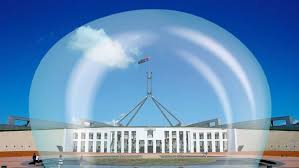
The Congress in Valparaiso has been invaded, and while the major excuse given for the increasing development of Parliament House into an impregnable Bubble Australia, thought must have been given to a popular invasion to construct it in such a manner. Presumably Bubble Australia has food and cocktails in store to last for six months in the event of a siege.
When people hate politicians enough, the tipping point will be reached. We are not immune from a Chilean-like situation – the only difference is that Australia has yet to have experienced a Pinochet. Yet we have a number of very good would-be impersonators.
I think Chile needs you back, Michelle. As for Australia, the space is unfilled – as yet. But then one of the characteristics of these new movements, apart from their youth is the difficulty in finding the leader to be carted off to gaol, effectively decapitating the rebellion. The Extinction crowd is on the streets, but they do not have the same mentality as the police force in its armour plate; and one has to hope wearily not to have a rerun of Queensland brutality à la Springbok tour or ageing commentators of both genders mimicking Askin’s admonition to drive over curly-headed young Sri Lankans – metaphorically of course.
However, if a society is unequal in its rewards system, and in their Morrisonian Bubble the beneficiaries try to insulate themselves, eventually someone will prick the Bubble or let the air be exhausted from the Bubble. It may take time, but there will come a time if there is no remedial action, we could end up like Chile or, for that matter, Hong Kong or Beirut.
Another Play with Words
Guest Blogger – Chris Brook*
The NSW government has announced that it is moving away from activity based funding in health care, to an outcomes-based funding approach. More recently the Australian Treasurer has declared that he wants Australia to do likewise to a quality care approach and eliminate low value and unnecessary care.
Both reflect the adoption of a new approach to measurement of value.
This announcement presages the latest fashion in health care economics and organisational design in the United States, which is value-based health care.
It is growing into a huge industry reaping enormous fees for consultants. As with any scheme, it gains keen audiences for its promoters because of its purported benefits and simplicity.
Basically the theory is simple – along the lines of:
(a) value, never quite defined but clearly related to outcomes and
(b) value, again never quite defined but including elimination of low value or unnecessary care resulting in:
- integrated care
- improved efficiency at all levels
- team based care
- patient-focussed care
- higher quality care
- better outcomes
- improved prevention of ill heath and
- lower cost
How could anyone object to such a set of targets?
And this all happens, apparently, through tweaking of economic signals along with better IT, better data capture and use, incentives for provider re-organisation and a value focus by patients. No wonder funders love the idea, or at least the components they choose to understand. However, like all things that sound too good to be true, it is too good to be true.
Some of the issues emerging are:
- it is a North American solution to a North American problem
- it assumes complete market flexibility, both patient and provider
- it does not define outcome (clinical, functional, meeting expectations – actual against expected) and
- it does not define value (whose or which value particularly)
Nonetheless some very interesting tools are being developed, such as much better prediction software which may dramatically alter future risk rating down as far as the individual level (with all the accompanying risks that entails).
To give the topic due attention needs at least a podcast discussion, with more than one opinion to assess.
This is but a teaser – an opening shot.
It does remind me that the world thought it had the solution to health care back in the 1930s, with the establishment of health maintenance organisations with uncannily similar promises – and promise!
As a very smart man once said to me looking into the mirror: “Chris, health maintenance organisations are a great idea and always will be.”
*Chris Brook PSM FRACP is a medical practitioner with 30 years senior management experience in the Australian health system
Tiempo, damas y cabelleros por favor
I came across the 29 May 2009 issue of Time which listed the 100 most influential people in the World. These lists are just one form of vanity press, a filler where high profile people are paid to write about other perceived high profile people who, unlike the writers, have attained the “magic” hundred.
The first one listed was Teddy Kennedy, who promptly died before the end of the year – and his legacy was his work in advocating for still unfinished health care reform. The second one listed was Gordon Brown, his paean written sympathetically by J.K. Rowling. He is long gone from the influential hundred; although he is probably behind the scenes within the Scottish resistance to Brexit.
However, in the 100 influential figures listed, both Boris Johnson and Elizabeth Warren get prominent space. A young Boris Johnson with boyish face and laughing eyes is eulogised by Conrad Black. One might say that it takes one to know one, but Black, ten years on pardoned by Trump for his malfeasance, was right in saying that Boris was a man to watch.
For her part, Elizabeth Warren is there for her expert knowledge of bankruptcy through all its shades, and her take on the financial services industry; she is “characteristically unfazed by the criticism.”
Surprisingly Putin and unsurprisingly Trump are not listed, and Xi Jinping is reduced to a narrow column on page 28. After being described in his role then as the Chinese vice-premier as “best known to many Chinese for his singing wife”, the writer goes on to pen that Xi lost his patience at a meeting in Mexico. He is quoted as saying, “Some foreigners can’t seem to mind their own business and sit around complaining about China.” But as the writer went on “He carefully flavoured the complaint as a joke, which took some of the pressure out. The politician’s instinct, it seems, is always at the ready.”
And as the writer said earlier in his piece: “the running joke in Beijing is that anytime there is a potentially nasty task, Xi gets it.”
First, Xi may joke, but he is no joke, and secondly I am not sure how he would describe Trump, but he obviously has a great deal of experience in such matters.
As for the rest, well there are those in elected office, those blazing a trail as “influential” and in the end there is mostly a Warholian outcome – maybe a tick over 15 minutes.
All shook up …
Guest Blogger: Janine Sargeant*
Hard to believe, but there apparently are “Elvis Loathers” – designated by areas of calm cobalt blue on a demographic map of the USA. The “Elvis Lovers” are bright red and shake up much of the eastern half of the US.

This map appeared in the August 1993 issue of American Demographics. Prepared by a Texas market research firm, using demographic data and addresses of members of Elvis fan clubs, it purports to show the depth and breadth of Elvis fandom. The most “Elvis-friendly” places apparently are small towns dominated by mills, farms and main street retailers, but also the newer blue-collar baby boomer suburbs on the edges of cities like Atlanta, Miami, Austin, Kansas City and San Diego.
Bob Lunn, then president of Direct Image Concepts Inc., said he launched the Elvis survey for a client wanting to sell Elvis memorabilia. While the client went bankrupt, Lunn’s company enjoyed plenty of publicity by making the survey available to the media. The 7,000 responses to his questionnaires came from Elvis fan club members. He used the responses to develop a composite of the then typical Elvis fan: a conservative, blue-collar, white woman in her 40s or 50s who votes Republican, has a high school education or less, is married with children, watches sitcoms and the Home Shopping Network and reads Bride’s Magazine and the National Enquirer. The typical fan also drives American sedans or pickup trucks, swims in above-ground pools, smokes menthol cigarettes, drinks malt liquor, and eats white bread, canned meats and Velveeta – all of which probably had a place on Elvis’s pantry shelves.
The Elvis map showed the clear divides that commonly exist in the US between east and west and north and south, although in this instance the north eastern states (with the exception of New York and Boston) certainly carried the flag for Elvis.
However, the map demonstrates how data can mislead. Based on Lunn’s methodology Alaska, with the exception of Anchorage, apparently is full of Elvis Loathers. Problem is, not much population in Alaska to move that state into the red zone (or perhaps it is just that the moose prefered Little Richard). Look more closely at the blue zones (except perhaps Blue Hawaii) and to a large degree the problem is a lack of individuals to sign up with an Elvis fan club.
What would the map show if it were redone now? Probably a lot more of “Elvis Who?” in beige, although it would likely now be called “Elvis? Meh.”
Exercises like these are an amusing diversion, but perhaps not to be relied on, as Lunn’s client discovered.
Janine Sargeant runs a medical association in the not-for-profit sector.
Mouse Whisper
Funny coincidence but my mouse trainer’s thirty-second wedding anniversary has fallen in the week of the thirty-second Modest Expectation blog. A coincidence, but in the world of gifts even for such an anniversary, ebony is the go.
